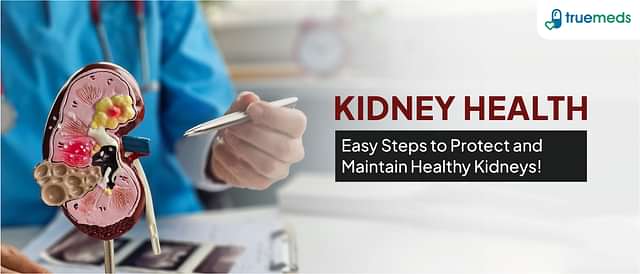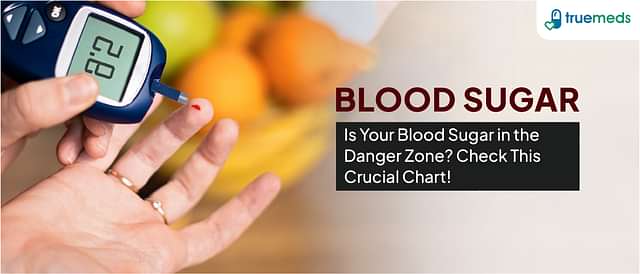Hypotension
Low blood pressure, or hypotension, is a condition in which blood pressure is lower than normal, potentially leading to insufficient blood supply to the heart, brain, and other vital organs. Hypotension can be classified into different types based on the underlying cause and the circumstances under which it occurs. Prompt diagnosis and appropriate treatment are essential to manage hypotension effectively and prevent complications.
Last updated on : 11 Nov, 2025
Read time : 12 mins

Overview of Disease
Low blood pressure, medically known as hypotension, is a condition that occurs when your blood pressure drops below the normal range. While it may not always cause symptoms, low blood pressure can sometimes indicate an underlying health issue that requires attention. Understanding the types, causes, and symptoms of low blood pressure is important for maintaining overall health and well-being.
What is Low Blood Pressure?
Blood pressure is the force exerted by your blood against the walls of your arteries. It is measured using two numbers: systolic pressure (the top number) and diastolic pressure (the bottom number). A normal blood pressure reading is typically around 120/80 mmHg. If your blood pressure consistently falls below 90/60 mmHg, it is considered low. Low blood pressure can reduce blood flow to vital organs, potentially causing damage if left untreated. Several types of low blood pressure can occur, each with its own causes and symptoms.
Key Factors about Hypotension
| Category | Details |
| Also Referred as | Low Blood Pressure, Postural Hypotension |
| Commonly Occurs In | Older Adults, Pregnant Women, People Taking Certain Medications, People with Heart Conditions, People with Nervous System Disorders |
| Affected Organ | Heart, Blood vessels |
| Type | Orthostatic, Postprandial |
| Common Signs | Lightheadedness, Dizziness, Fainting, Headache, Fatigue, Nausea |
| Consulting Specialist | Cardiologist, Critical Care Specialist, General Practitioner |
| Treatement Procedures | Fluid Replacement, Medication, Lifestyle Changes |
| Managed By | Corticosteroids (Fludrocortisone), alpha-agonist (Midodrine), and Vasoconstrictors (Norepinephrine) |
| Mimiciking Condition | Anaemia, Dehydration |
Types of Hypotension
The types of hypotension include:
Orthostatic hypotension: Also referred to as postural hypotension, this type of low blood pressure occurs when an individual experiences a sudden drop in blood pressure upon standing up from a lying or sitting position. Orthostatic hypotension is more common in older adults, people with high blood pressure, and those diagnosed with Parkinson's disease. The symptoms usually last for a brief period, typically a few seconds to minutes.
Postprandial hypotension: This type of low blood pressure is characterised by a decrease in blood pressure after consuming a meal. Postprandial hypotension is more frequently observed in older adults and individuals with autonomic dysfunction, a condition affecting the nervous system's ability to regulate body functions.
Neurally mediated hypotension: Neurally mediated hypotension results from an abnormal reflex interaction between the heart and the brain. This type is commonly seen in children who have been standing for prolonged periods or who experience intense emotional responses, such as fear or shock.
Severe hypotension: A severe drop in blood pressure can occur during shock, a life-threatening condition that requires immediate medical attention. Severe hypotension can be caused by various factors, including severe injury, infection, or allergic reactions.
Symptoms of Hypotension
Low blood pressure can manifest through various symptoms. These may include:

- Dizziness and lightheadedness: Feeling dizzy or lightheaded, especially when standing up quickly, is a frequent symptom of low blood pressure. This occurs because a sudden drop in blood pressure can reduce blood flow to the brain.
- Fatigue: Unusual tiredness or a lack of energy is often reported by individuals with low blood pressure. This fatigue can occur due to inadequate blood flow to the body's organs and muscles, making daily activities feel more draining.
- Fainting: In more severe cases, low blood pressure can lead to fainting or syncope. This happens when blood flow to the brain is significantly reduced, causing a temporary loss of consciousness.
- Blurred vision: Low blood pressure may cause vision problems such as blurred vision or a sensation of narrowing in the field of view. This happens because reduced blood flow affects the eyes' ability to function properly.
- Nausea: Feeling nauseous or experiencing an upset stomach can also be a sign of hypotension. Reduced blood flow to the digestive system can interfere with normal digestive processes, leading to discomfort.
- Cold skin: The skin may feel cold and clammy to the touch when blood pressure drops. This symptom occurs due to the body’s attempt to redirect blood flow to vital organs, leaving the skin less perfused.
- Difficulty concentrating: Low blood pressure can impact cognitive function, leading to difficulty concentrating or mental fog. Insufficient blood flow to the brain can impair cognitive abilities and focus.
Causes of Hypotension
Several factors can contribute to the development of low blood pressure. Some common causes include:
Medications: Certain medications, such as diuretics, antidepressants, and antipsychotics, can lower blood pressure as a side effect.
Dehydration: Losing fluids through excessive sweating, diarrhoea, or vomiting can lead to dehydration and, consequently, low blood pressure.
Blood loss: Significant blood loss, whether due to injury or internal bleeding, can cause a drop in blood volume and pressure.
Heart problems: Conditions like heart failure, heart valve problems, and abnormal heart rhythms can impair the heart's ability to pump blood effectively, leading to low blood pressure.
Endocrine disorders: Hormonal imbalances caused by conditions such as adrenal insufficiency and hypothyroidism can result in low blood pressure.
Pregnancy: Hormonal changes during pregnancy can cause blood pressure to drop, especially in the first trimester.
Nutritional deficiencies: Lack of essential vitamins like B-12 and folic acid can lead to anaemia, which may contribute to low blood pressure.
Understanding the underlying causes of low blood pressure is essential for determining the appropriate course of treatment and management.
Risk Factors
Several factors can increase an individual's likelihood of developing low blood pressure:
Age (over 50 years)
Engaging in extreme physical activity
Having certain medical conditions such as diabetes, hypertension, or heart disease
Who's at Risk?
Certain groups of people are more prone to experiencing low blood pressure:
Pregnant women, due to hormonal changes and increased blood flow demands
Individuals with certain heart conditions or those who have recently had a heart attack or heart surgery
People taking specific medications that can cause low blood pressure as a side effect
Those with endocrine disorders like hypothyroidism or Addison's disease
Individuals following diets low in salt or suffering from eating disorders
People exposed to extreme heat for prolonged periods, leading to dehydration
If you belong to any of these at-risk groups, it is crucial to monitor your blood pressure regularly and consult your doctor to prevent and manage hypotension effectively.
Complications
Low blood pressure can lead to various complications if left untreated or if the underlying causes are not addressed. Some potential complications include:
Organ damage: Very low blood pressure can cause insufficient blood flow to organs, potentially leading to shock, which can be life-threatening.
Decreased oxygen delivery: Inadequate blood flow can result in reduced oxygen delivery to cells, causing cellular malfunction and damage.
Increased risk of falls: Dizziness and lightheadedness associated with hypotension can increase the risk of falls, particularly in older adults.
Deep vein thrombosis (DVT) and stroke: Slow blood flow due to low blood pressure can increase the risk of blood clots forming, potentially leading to DVT and stroke.
Neurological issues: Prolonged hypotension can cause permanent damage to the brain and nervous system.
Cardiovascular problems: Low blood pressure can be a sign of underlying heart conditions such as heart failure, heart attack, or abnormal heart rhythms.
Septic shock: A life-threatening condition caused by bacterial infections that can result in severe hypotension.
Anaphylaxis: A severe allergic reaction that can cause low blood pressure along with other symptoms like difficulty breathing and rapid heartbeat.
Myocardial infarction: A heart attack that can lead to hypotension due to decreased cardiac output.
Addison's disease: A hormonal disorder that can cause low blood pressure due to adrenal insufficiency.
Preventing low blood pressure is crucial to avoid these potential complications and maintain overall health.
Prevention of Hypotension
Preventing low blood pressure involves addressing the underlying causes and maintaining a healthy lifestyle. Some preventive measures include:
Adequate hydration: Drinking enough water to prevent dehydration, which can contribute to hypotension.
Healthy diet: Eating a balanced diet that includes foods rich in vitamins B12 and folic acid to help maintain a healthy red blood cell count.
Regular exercise: Engaging in regular physical activity to improve cardiovascular health and maintain healthy blood pressure levels.
Avoiding certain medications: Be cautious when taking medications that can cause hypotension as a side effect, such as diuretics or antidepressants, and discuss alternatives with a doctor if necessary.
Managing underlying conditions: Treating and managing any underlying health conditions that may contribute to low blood pressure, such as heart problems or endocrine disorders.
By incorporating these preventive measures into daily life, individuals can reduce their risk of developing low blood pressure and its associated complications.
Diagnosis & Tests
Diagnosing low blood pressure involves a comprehensive evaluation by a doctor. The diagnostic process typically includes:
Measuring blood pressure: A blood pressure reading below 90/60 mmHg is generally considered low, although this may vary depending on individual factors and symptoms.
Reviewing medical history: The doctor will enquire about any existing medical conditions, medications, and family history that may contribute to hypotension.
Physical examination: The doctor will assess for signs of low blood pressure, such as dizziness, fainting, or cold, clammy skin.
Orthostatic test: This test involves measuring blood pressure while the patient is lying down, sitting, and standing to evaluate how the body responds to changes in position.
Blood tests: Laboratory tests can help identify underlying conditions, such as anaemia, diabetes, or hormonal disorders, that may cause low blood pressure.
Electrocardiogram (ECG): An ECG can detect heart conditions, such as arrhythmias or heart failure, which may contribute to hypotension.
Echocardiogram: This imaging test provides a detailed view of the heart's structure and function, helping to identify any abnormalities that may lead to low blood pressure.
Stress test: In some cases, a stress test may be performed to assess how the heart responds to physical activity and its impact on blood pressure.
Once the underlying cause of low blood pressure is identified, the doctor can develop an appropriate treatment plan to manage the condition and prevent complications.
Treatment & Management
Managing hypotension often requires medications that help increase blood pressure by different mechanisms. Below are key treatment options:
1. Norepinephrine
- Norepinephrine is a potent vasoconstrictor used in acute settings to rapidly increase blood pressure.
- Works by narrowing blood vessels, which enhances blood flow to vital organs.
2. Midodrine
- Midodrine is an alpha-agonist that constricts blood vessels to elevate blood pressure.
- Commonly prescribed for chronic hypotension and orthostatic hypotension.
3. Fludrocortisone
- Fludrocortisone is a corticosteroid that helps increase blood volume.
- Promotes salt and water retention in the kidneys, thereby raising blood pressure.
4. Additional Measures
- Increasing salt intake can aid in fluid retention, leading to higher blood volume.
- Proper hydration and lifestyle adjustments may further support blood pressure regulation.
These medications and lifestyle modifications play a vital role in effectively managing hypotension under medical supervision.
When to See a Doctor?
It is important to consult a doctor if you experience symptoms associated with low blood pressure, such as dizziness, fainting, nausea, or blurred vision. These symptoms can indicate an underlying health issue that requires medical attention. Additionally, if you suspect that your current medication is causing low blood pressure or if you have a pre-existing health condition that may be contributing to hypotension, it is essential to discuss your concerns with a doctor. They can help determine the cause of your low blood pressure and develop an appropriate treatment plan tailored to your specific needs.
Key Takeaways
Low blood pressure, or hypotension, occurs when blood pressure falls below the normal range.
Management of low blood pressure involves identifying and treating the underlying cause.
Treatment options include lifestyle changes, medications, hormone replacement therapy, and addressing underlying health conditions.
Key medications for treating hypotension include fludrocortisone, midodrine, and norepinephrine.
Consult a doctor if you experience symptoms of low blood pressure or suspect that your medication or an underlying health condition may be contributing to hypotension.
FAQs
Is 80-40 blood pressure too low?
A blood pressure reading of 80/40 mm Hg is considered too low, as the normal range falls between 90/60 mm Hg and 120/80 mm Hg.
Can drinking water help hypotension?
Yes, drinking water can help alleviate symptoms of hypotension by increasing fluid intake, which may help raise blood pressure levels. However, always consult a doctor for personalised advice.
What foods help increase blood pressure?
While no specific foods directly increase blood pressure, a balanced diet rich in electrolytes such as potassium, sodium, and magnesium can help regulate blood pressure levels.
What is normal blood pressure by age?
Normal blood pressure ranges can vary across age groups, generally falling between 90/60 mm Hg and 120/80 mm Hg for adults. However, factors like fitness level and overall health can influence these ranges.
Can hypotension be cured?
The ability to cure hypotension depends on the underlying cause. In some cases, addressing the root cause and making lifestyle changes can effectively manage or resolve low blood pressure.
What is the range for hypotension?
Hypotension is typically characterised by a blood pressure reading below 90/60 mm Hg, although this can vary based on individual health conditions.
What are some home remedies that can help manage low blood pressure symptoms?
Some home remedies for managing low blood pressure symptoms include staying well-hydrated, eating smaller, more frequent meals, lying down or sitting still after eating, getting up slowly from sitting to standing positions, avoiding prolonged sitting or bending, and limiting excessive alcohol consumption.
References
American Heart Association. (2024). Low blood pressure - When blood pressure is too low. Retrieved from https://www.heart.org/en/health-topics/high-blood-pressure/the-facts-about-high-blood-pressure/low-blood-pressure-when-blood-pressure-is-too-low
National Heart, Lung, and Blood Institute. (2022). Low blood pressure. Retrieved from https://www.nhlbi.nih.gov/health/low-blood-pressure
Penn Medicine. (n.d.). Low blood pressure - Symptoms and causes. Retrieved from https://www.pennmedicine.org/for-patients-and-visitors/patient-information/conditions-treated-a-to-z/low-blood-pressure
StatPearls Publishing. (n.d.). Hypotension. Retrieved from https://www.ncbi.nlm.nih.gov/books/NBK499961/
Better Health Channel. (n.d.). Blood pressure (low) - hypotension. https://www.betterhealth.vic.gov.au/health/conditionsandtreatments/blood-pressure-low-hypotension
Check Related Salts
Browse Other Conditions
Latest health articles
Top Health Essentials
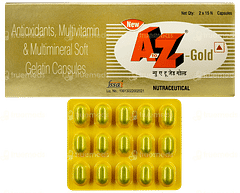

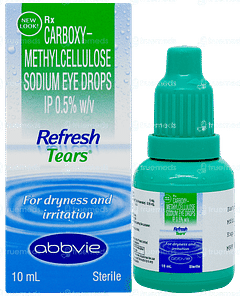
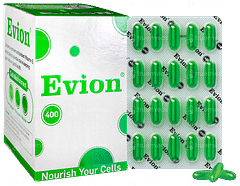
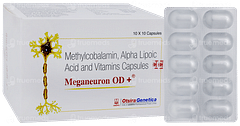
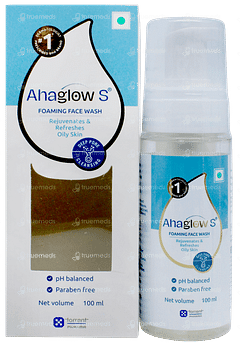







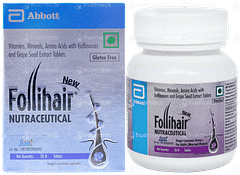
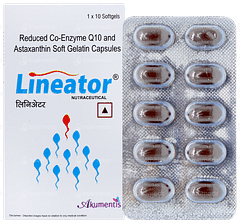


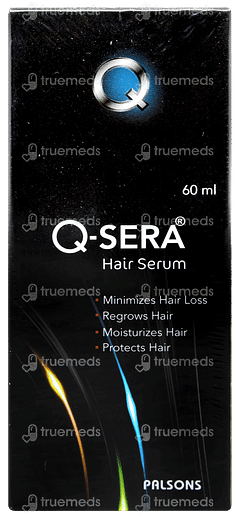


Disclaimer
Top-Selling Medicines:
...View more
Top-OTC medicines:
...View more
Company
About UsHealth ArticleHealth StoriesHealth LibraryDiseases & Health ConditionsAyurvedaUnderstanding Generic MedicinesAll MedicinesAll BrandsNeed HelpFAQSecuritySubscribe
Registered Office Address
Grievance Officer
Download Truemeds
Contact Us
Our customer representative team is available 7 days a week from 9 am - 9 pm.
v4.10.2
2025 - Truemeds | All rights reserved. Our content is for informational purposes only. See additional information.
Our Payment Partners














